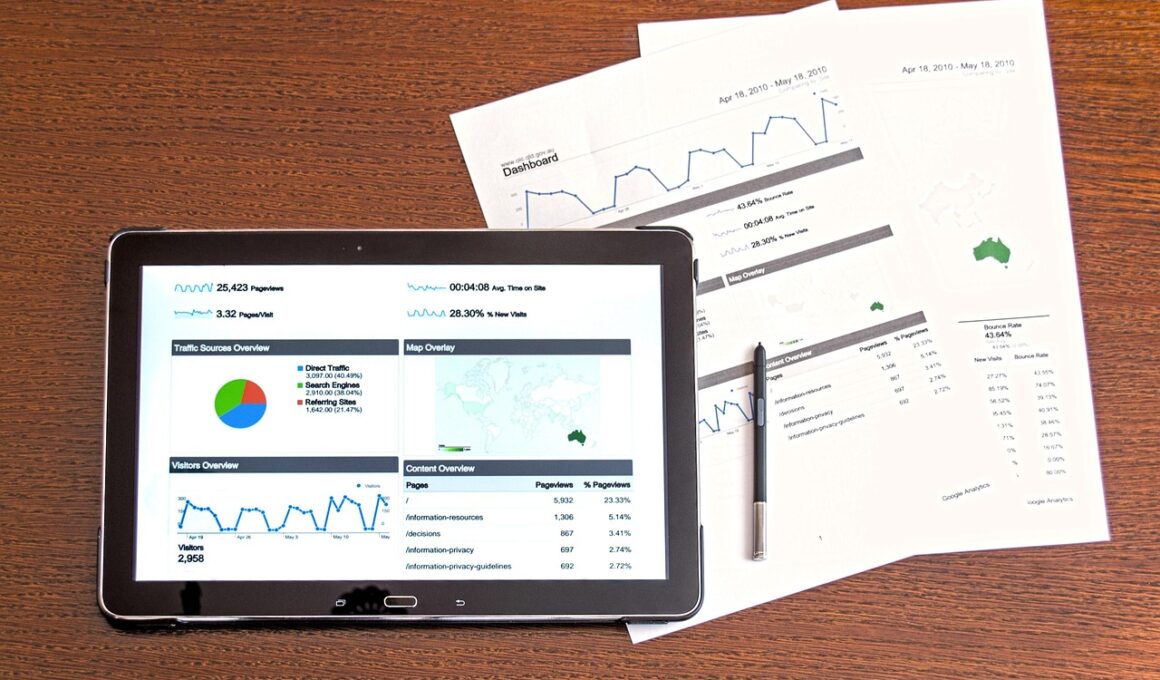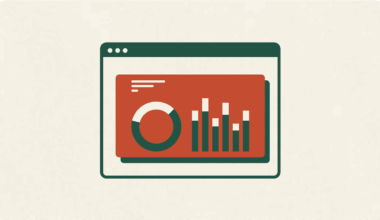Using Heatmaps and User Behavior Analytics for Influencer Campaigns
Influencer marketing is a powerful tool used by brands to connect with their target audiences. To maximize the effectiveness of these campaigns, tracking influencer campaign metrics becomes essential. One of the most effective ways to analyze user engagement and behavior is through heatmaps. Heatmaps visually represent data like clicks, scroll depth, and interactions, allowing marketers to determine which areas of their content attract the most attention. This information can help brands optimize their strategies by identifying high-performing content and adjusting underperforming elements accordingly. Moreover, heatmaps can highlight user behaviors that lead to conversions, enabling brands to refine their customer journeys. Integrating heatmaps into influencer campaigns not only enhances the visualization of user engagement but also aids in assessing the impact of specific influencers. By understanding where audience focus lies, brands can make data-driven decisions that lead to better ROI on influencer partnerships. Ultimately, combining heatmaps with standard metrics offers a comprehensive approach to tracking campaign success. Brands that leverage these insights will position themselves ahead of competitors, gaining a deeper understanding of what resonates with their audiences.
Another critical aspect of tracking influencer campaign metrics is user behavior analytics. By utilizing sophisticated tools that monitor and analyze user interactions, brands can gather valuable insights into how audiences respond to influencer content. These analytics help in understanding visitor journeys, dwell times, and exit rates. The data collected can inform brands about which content works best collaboratively with specific influencers, allowing marketers to tailor campaigns to align with consumer preferences. Furthermore, significant user behavior data can reveal new trends and preferences within target demographics, enabling brands to stay ahead of shifting market dynamics. For instance, knowing how users interact with an influencer’s post can inform future content strategies. Analytics can also identify peak engagement times, helping brands optimize posting schedules for maximized reach. By diving into these metrics, brands can ensure that their collaborations are not only creative but also data-focused, effectively increasing the chances of achieving their marketing objectives. Those brands that intelligently use user behavior analytics can refine their influencer strategies, measuring success in more meaningful ways than just follower counts or basic engagement metrics.
Benefits of Heatmaps in Influencer Campaigns
Implementing heatmaps in influencer campaigns offers numerous benefits beyond simply identifying popular content areas. These visual representations provide immediate insights into user behavior patterns, allowing brands to swiftly adapt to audience needs and preferences. One notable advantage is the ability to enhance content layouts to improve user experience significantly. By observing where users click, scroll, and spend the most time, teams can better structure content for maximum engagement. Moreover, heatmaps facilitate A/B testing by comparing different campaign elements, such as varying images or calls-to-action. This helps brands identify which versions drive more interactions, leading to optimized conversion rates. Another benefit is the opportunity for deeper audience segmentation by analyzing behavior patterns across various demographics. Customizing content based on audience insights can result in a more tailored approach, increasing the effectiveness of influencer partnerships. Additionally, as brands monitor heatmaps over time, they can track performance trends and assess how shifts in content strategy affect user engagement. The wealth of information provided by heatmaps positions brands to make informed decisions that improve overall marketing effectiveness and drive audience loyalty.
Combining heatmaps with other analytics tools creates a robust framework for tracking influencer campaign metrics. For example, integrating Google Analytics data with heatmaps allows brands to contextualize user behavior within the broader scope of website traffic and performance. By understanding how many visitors came through an influencer link, how long they stayed, and which content sparked their interest, brands can gain a holistic view of their campaigns. Viewing heatmaps in conjunction with conversion rates helps determine which influencer partnerships are yielding the best returns. Furthermore, sharing this comprehensive data with influencers can foster collaboration by ensuring they understand what works, promoting a more symbiotic relationship. This transparency encourages influencers to tailor their content more effectively, knowing what resonates with audiences. Ultimately, creating a synergy between these analytical tools will lead to better campaign outcomes, as brands refine their approaches based on actionable insights. The combined narrative that emerges from these analytics enables brands to leverage influencers more effectively, ensuring campaign success is measurable and replicable moving forward.
Challenges in Tracking Influencer Metrics
While there are significant advantages to using heatmaps and user behavior analytics, several challenges exist in tracking influencer metrics effectively. One major challenge is ensuring data accuracy; tracking metrics accurately can be complex due to multiple platforms and varying user behaviors across social media channels. Additionally, not all metrics provide the same value, and determining which ones to prioritize can be daunting. Brands often find it challenging to correlate engagement metrics directly to conversions, leading to confusion over campaign effectiveness. Moreover, privacy regulations impact the amount of user data available, especially on platforms such as Facebook and Instagram, creating difficulties in obtaining comprehensive insights. Furthermore, reliance on third-party analytics tools introduces potential discrepancies in data interpretation and presentation. Organizations must ensure that they invest in consistent tracking methods that yield comparable data across different campaigns. Overcoming these hurdles requires a strategic approach that includes setting clear metrics, utilizing integrated tools, and actively working towards understanding user motivations and behaviors to refine influencer collaboration strategies seamlessly.
To also enhance tracking influencer campaign metrics, diversifying analysis techniques may offer additional insights. While heatmaps and user behavior analytics are powerful, complementing them with sentiment analysis can provide a more nuanced understanding of audience perceptions. Sentiment analysis assesses user-generated content and comments to gauge feedback on influencer posts, revealing overall sentiment trends. Integrating this qualitative data into the quantitative metrics from heatmaps can lead to more informed strategic decisions. Additionally, conducting qualitative surveys or interviews post-campaign can further enhance understanding of influencer effectiveness from the audience’s perspective. Using various methods helps create a well-rounded view of the collaboration’s impact, ensuring that brands perceive both tangible metrics and emotional responses effectively. This comprehensive approach can foster better relationships between brands and influencers as companies adjust their strategies based on more profound insights into audience perceptions. Future-proofing influencer marketing initiatives requires embracing diversified analysis techniques, positioning brands to navigate varying market expectations and audience engagement patterns proficiently.
The Future of Influencer Campaign Tracking
Looking ahead, the future of tracking influencer campaign metrics will likely evolve towards more sophisticated technologies and methodologies. As artificial intelligence and machine learning become more integrated into marketing tools, brands can anticipate enhanced analytics capabilities that offer deeper insights into user behaviors and campaign performance. Predictive analytics may become a standard feature, allowing companies to forecast potential trends based on historical data. Additionally, as the digital landscape expands, new measurement standards may emerge that allow for a clearer understanding of influencer impact beyond conventional metrics. Platforms might develop features that enable real-time tracking of influencer engagements, providing brands with up-to-minute data. As these technologies advance, it is vital for marketers to stay adaptable, embracing change and continually refining their strategies based on innovative methodologies. Moreover, the rise of augmented and virtual reality in influencer campaigns could change the ways user interactions are measured, leading to richer and more immersive user experiences. The continual evolution of influencer marketing will demand a commitment to lifelong learning and improvement in tracking strategies, setting the stage for future successes.
In conclusion, tracking influencer campaign metrics is crucial in maximizing the effectiveness of these creative collaborations. Utilizing tools like heatmaps and user behavior analytics empowers brands to glean invaluable insights into audience engagement and preferences. By understanding where users concentrate their attention, brands can tailor their content, thereby enhancing the overall user experience. The synergy between quantitative and qualitative data further enriches the analysis, allowing for deeper audience segmentation and strategy refinement. However, brands must navigate the challenges associated with tracking, including data accuracy and privacy regulations, to exert meaningful influence over their campaigns. Investing in diverse analysis methods can yield a comprehensive understanding of influencer impacts, ensuring that brands optimize collaboration results. Future developments indicate a more technology-driven landscape for influencer marketing, where adaptability and innovative practices become paramount. As brands strive for excellence in measuring and understanding campaign effectiveness, continual refinement of tracking strategies will be essential as they seek to resonate with audiences and achieve their marketing goals in the competitive digital realm.


